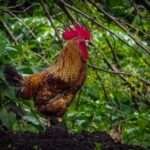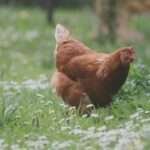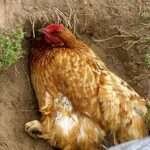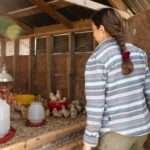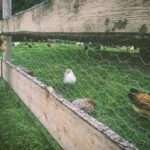The allure of allowing your free ranging chickens to explore the great outdoors, and indulging in natural behaviors is undeniably tempting. However, the harmony between free ranging chickens and preserving your property requires careful planning, thoughtful design, and strategic fencing. In this comprehensive guide, we’ll walk you through the intricate dance of balancing the joys of free ranging with property protection, ensuring your feathered friends enjoy their newfound freedom while safeguarding your garden and outdoor spaces.
The Art of Free Ranging: Considerations and Planning
Embracing the concept of free ranging opens a gateway to numerous benefits for your chickens. They relish the opportunity to forage for insects, peck at greens, and indulge in dust baths. Beyond the chicken coop, they experience a healthier and happier existence, resulting in improved overall well-being. Additionally, their natural foraging reduces feed costs, offering an economical advantage.
However, before setting your chickens free, thoughtful planning is paramount. One crucial consideration is delineating the areas where your flock can roam freely and areas requiring protection. A comprehensive property assessment helps identify potential hazards, such as deep holes or pits, which should be cordoned off to ensure the safety of your chickens. Ensuring access to clean water sources is equally crucial, as it enhances their foraging experience and overall health.
Types of Fencing: Choosing the Right Barrier
Selecting the appropriate fencing plays a pivotal role in creating a harmonious free-ranging environment. The type of fencing you choose should align with your property’s layout, your aesthetic preferences, and your chickens’ needs. Let’s explore some options:
- Wire Mesh: A popular choice, wire mesh fencing is versatile and effective in keeping your chickens contained. While it provides visibility and airflow, it may require maintenance over time to prevent wear and tear.
- Star Droppers and Wire: This option combines star droppers (metal fence posts) with wire mesh, offering sturdiness and durability. The combination ensures that your chickens remain within their designated area while still enjoying the outdoor experience.
- Electric Mesh Fencing: An ingenious solution, electric mesh fencing provides both portability and flexibility. This low-voltage fencing option allows you to create moveable free-ranging zones, adjusting the space as needed. While setup and use require careful attention, the benefits in terms of controlled exploration are significant.
The cost of fencing materials can vary widely, depending on the size of your free-ranging area and the type of fencing you choose. Wire mesh and star droppers can incur moderate costs, with estimates ranging from $100 to $300 for a small to medium-sized area. Electric mesh fencing, while offering versatility, may require an initial investment of around $150 to $400, considering the cost of the fencing itself and the electric energizer. While costs are a consideration, the long-term benefits in terms of chicken well-being and property preservation make it a worthwhile investment.
Mapping Your Territory: Designing Safe and Productive Zones
A crucial aspect of creating a successful free-ranging environment is mapping out the zones where your chickens can explore freely and defining areas that require protection. Begin by identifying water sources and marking them as accessible zones. Consider any potential hazards, such as uncovered pits or deep holes, and mark them off-limits to prevent accidents.
Intricate areas like vegetable gardens, delicate flower beds, or spaces where you frequent should also be safeguarded. Designate these areas as no-go zones, either by creating physical barriers or employing visual cues that signal to your chickens that these places are off-limits. Additionally, consider pathways and porches where chicken droppings might pose a hygiene concern. By thoughtfully mapping out your territory, you strike a balance between your chickens’ freedom and the need to protect valued spaces.
In the upcoming sections, we’ll delve deeper into the intricacies of managing chicken droppings, the creative utilization of electric mesh fencing, and the importance of rotating free-ranging zones to preserve vegetation and soil health. By the end of this guide, you’ll be equipped with the knowledge and strategies to create a harmonious free-ranging space that blends the joys of chicken exploration with responsible property management.
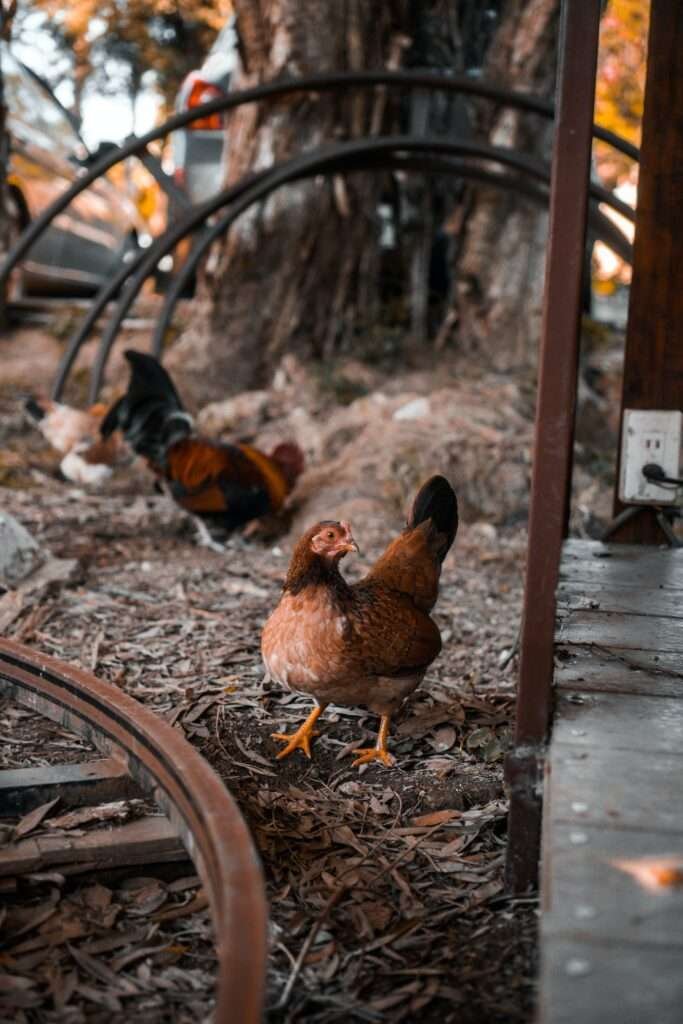
The Delicate Dance of Chicken Poop Management
As you embark on the adventure of free ranging, it’s essential to acknowledge a universal truth: chickens poop—a lot. While their droppings play a vital role in soil enrichment, they can also create challenges, especially in high-traffic areas. Managing chicken poop becomes a delicate balancing act, ensuring your property remains tidy and hygienic without compromising the freedom your chickens enjoy.
One key consideration is pathways and porches that are frequently used by humans. While chickens roam, they’re likely to leave their mark on these pathways, creating a less-than-pleasant experience for anyone stepping on an unexpected surprise. To address this, consider utilizing protective mats or covers in areas where chicken droppings may accumulate. These mats are easily washable and can be strategically placed to prevent unwanted contact with chicken waste.
In free-ranging zones, embracing the reality of chicken droppings can lead to innovative solutions. For example, consider adding a layer of mulch or straw to designated foraging areas. This not only helps manage droppings but also enriches the soil as the materials break down over time. Regularly raking or turning the mulch can help distribute droppings and keep the area clean, ensuring your chickens’ foraging experience remains enjoyable and mess-free.
Electric Mesh Fencing: Creating a Moveable Run
One of the most ingenious solutions for managing free-ranging chickens is the use of low voltage electric mesh fencing. This innovative approach offers the best of both worlds: controlled chicken exploration and the flexibility to create moveable free-ranging zones. While setting up and using electric mesh fencing requires careful attention, the benefits it offers are invaluable.
Setting Up Electric Mesh Fencing:
- Choose an Energizer: Begin by selecting an appropriate electric energizer based on the size of your free-ranging area. Energizers are available in various power levels to suit your needs.
- Install the Posts: Set up sturdy posts along the perimeter of the desired free-ranging zone. These posts will hold the electric mesh and ensure the fence remains upright and secure.
- Attach the Mesh: Carefully attach the electric mesh to the posts, ensuring a snug and secure fit. Electric mesh fencing is specifically designed to keep chickens in and predators out.
- Install the Energizer: Connect the energizer to the fence, ensuring proper grounding. Follow the manufacturer’s instructions for installation and safety precautions.
Benefits of Electric Mesh Fencing:
- Portability: Electric mesh fencing offers the unique advantage of portability. You can easily adjust the size and shape of the free-ranging area by relocating the fence as needed.
- Predator Deterrence: The mild electric shock provided by the fencing acts as an effective deterrent against predators, ensuring your chickens’ safety.
- Vegetation Protection: Electric mesh fencing minimizes the impact of foraging on specific areas, allowing vegetation to recover and regrow over time.
Challenges and Considerations:
While electric mesh fencing offers remarkable benefits, it’s crucial to address potential challenges. Ensure proper grounding and regularly check the fence’s functionality to prevent escapes or predator intrusions. Additionally, educate your family and children about the presence of the electric fence to prevent accidental shocks.
In the final segment of this guide, we’ll delve into the importance of rotating free-ranging zones and how this practice contributes to vegetation preservation and soil health. By incorporating these strategies and considerations, you’ll create an enriching and harmonious free-ranging environment that maximizes your chickens’ well-being and minimizes the impact on your property.
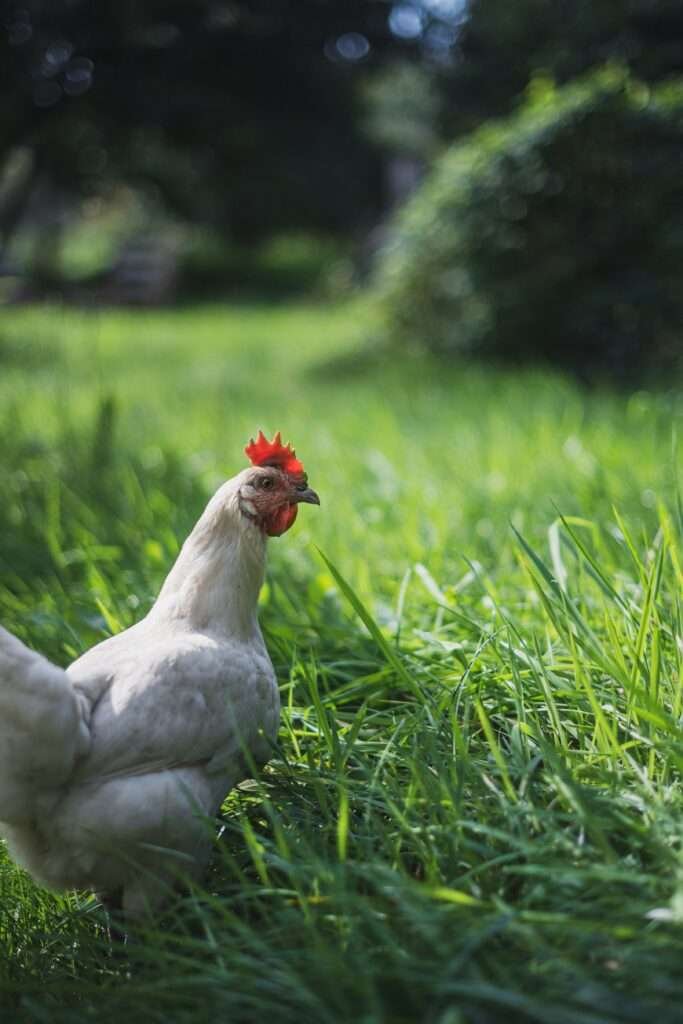
Rotating Free-Ranging Zones: Preserving Vegetation and Soil Health
As you embark on the journey of free ranging, it’s essential to acknowledge that chickens are natural foragers and ground-scratchers. This behavior, while beneficial for their well-being, can take a toll on vegetation and soil health over time. To strike a harmonious balance between chicken exploration and property preservation, the practice of rotating free-ranging zones becomes a valuable strategy.
Understanding Chicken Foraging Behavior:
Chickens possess an innate instinct to scratch the ground in search of insects, seeds, and other edible treasures. While this behavior is perfectly natural and healthy, it can lead to areas of bare ground, uprooted plants, and disturbed soil. Over time, constant scratching can impact soil structure and erode the topsoil layer, potentially hindering the growth of vegetation.
Benefits of Rotating Free-Ranging Zones:
Rotating free-ranging zones involves periodically changing the areas where your chickens are allowed to explore. This practice offers several significant benefits:
- Vegetation Recovery: By allowing previously foraged areas to rest and recover, you give vegetation a chance to regrow and replenish. Rotating zones prevent overgrazing and help maintain a lush and vibrant landscape.
- Soil Health: Resting foraged areas contributes to soil health by reducing compaction and erosion. It allows soil microorganisms to flourish, enhancing nutrient cycling and promoting a thriving ecosystem beneath the surface.
- Pest Control: Rotating free-ranging zones disrupts the life cycles of potential pests, reducing the risk of infestations and promoting a healthier environment for both your chickens and your garden.
Implementing a Rotation Schedule:
Creating a rotation schedule is a straightforward yet effective approach to managing free-ranging areas. Divide your outdoor space into distinct zones, and allocate specific time intervals for your chickens to explore each zone. For example:
- Zone A: Weeks 1-2
- Zone B: Weeks 3-4
- Zone C: Weeks 5-6
During each allocated time period, your chickens are free to forage and explore within the designated zone. After the rotation period ends, close off the previous zone and open the next, allowing vegetation to recover and rejuvenate.
Enhancing Rotation with Portable Fencing:
To facilitate easy rotation, portable electric mesh fencing proves invaluable. As previously discussed, this fencing type allows you to create controlled free-ranging zones. By relocating the electric mesh fence, you guide your chickens to a new area while safeguarding those that require a respite.
Education and Observation:
Incorporate your family, especially children, in the rotation process. Teach them about the importance of rotating zones and its positive impact on both the chickens and the environment. Encourage them to observe the changes in vegetation, soil health, and chicken behavior as you implement the rotation schedule.
A Harmony of Freedom and Preservation
As you embrace the concept of free ranging and carefully manage its nuances, you embark on a journey that harmoniously balances chicken freedom with property preservation. The thoughtful choice of fencing, understanding and managing chicken droppings, and the practice of rotating free-ranging zones collectively contribute to a rewarding and enriching experience for both you and your feathered companions.
By implementing these strategies, you create a dynamic ecosystem where chickens thrive, vegetation flourishes, and the land benefits from their natural behaviors. As your chickens roam, scratch, and explore, they play a vital role in nurturing the land, enriching the soil, and contributing to the beauty of your outdoor space. Together, you and your chickens forge a harmonious partnership that celebrates the wonders of nature while preserving the splendor of your property.

